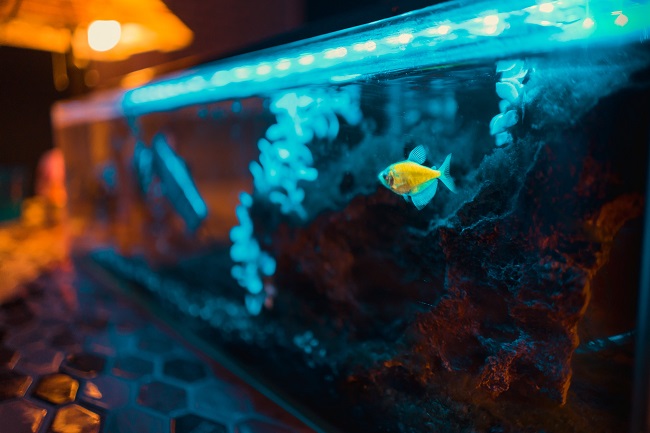
Like most pets, fish can occasionally get sick. Here are six simple steps to follow when you notice something is not quite right with your aquarium.
Check the Tank and Accessories
Make sure the air stones are working properly by doing these things:
- Check for kinks in the air lines.
- Check the water flow around the tank to see whether the filter inlets are functional, and whether the filters are moving water around.
- Check the tank temperature.
- Check the water level in the tank to see it hasn’t dropped below levels that allow proper filter operation. Good aeration is essential for infirmed fish.
Check the Water Quality Parameters
Each fish has a level of water quality within which it likes to live. Make some notes of the levels which your fish should like to live in, and have them handy for when problems arise so you can compare. Measure pH, total ammonia levels, nitrite, nitrate, temperature, hardness and alkalinity.
Change the Water in the Tank
Replace 30-40% of the water in the tank with clean aged water. This water needs to be de-chlorinated and have the water parameters that your fish require. If you have found high ammonia, nitrite or nitrate levels with your tests, this water change will help dilute the levels down to less toxic levels.
Add a Balanced Salt Formulation
Adding a balanced salt formulation will help balance the salt/water content present, which reduces the stress on the fish. Levels of salt from 2 – 5 grams per quart will be well tolerated by most fish. There are some fish that don’t tolerate salt at all so make a note when you buy your fish as to their tolerance to salt. 24 – 48 hours in a salt bath will help a lot, while you investigate a cause of the health problems.
Remove any Bodies
If there has been a serious mortality rate in your fish tank, make sure that you remove any bodies.
Compile a Complete History
Document the history of the fish tank for the last two weeks prior to the problem occuring. Every little detail can help. Include introductions, water exchange history, when, with what water, what treatments, new fish, new plants etc. Even if the details seem silly to you, make a note, as it may be the little details that help the diagnostician/veterinarian come up with an answer. Any fish that have died need to be collected fresh if they are going to be useful for diagnostics. Wrap the animal in a plastic bag and place it in the fridge. If it is older than two days, it will be of little use and can be disposed of or buried. Most of all don’t panic, and avoid using the cocktail treatments that usually cause more stress on your fish than they alleviate.
Provided by Dr. Stephen Pyecroft
Did You Know
Female snakes are larger than male snakes.
Snakes are nearsighted and do not have eyelids.
Sea snakes have no gills and must rise to the surface for air.
20 % of the total number of the snake species are poisonous.
When a snake is growing, it sheds its skin as often as every 4 or 5 weeks.
The fastest snake travels at 8 mph.
Snakes are deaf to airborne sounds.
Related Articles & Free Email Newsletter Sign Up
How Fish Rise & Sink in the Water and More
How to Identify and Solve Aquarium Problems
How to Keep a Healthy Aquarium Through Preventive Maintenance

Comment here